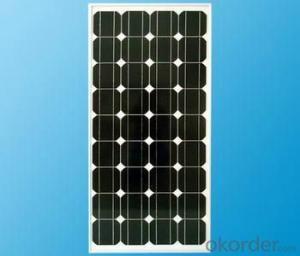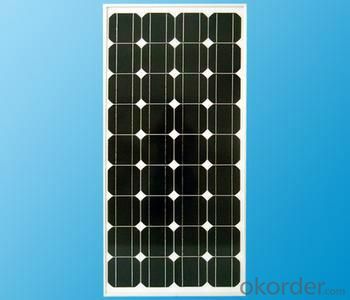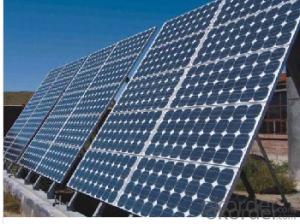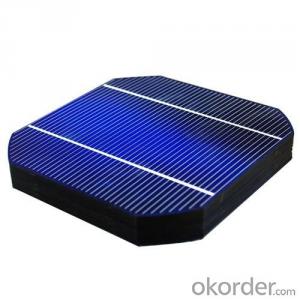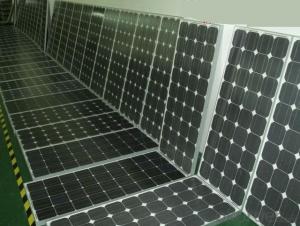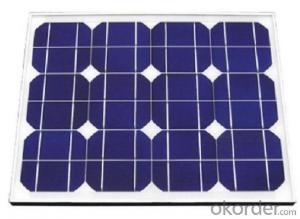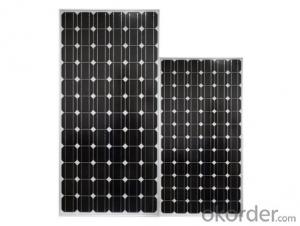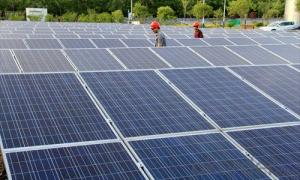Low Cost 20w18v Mono Solar Panel, High Quality, Hot Sales
- Loading Port:
- China main port
- Payment Terms:
- TT OR LC
- Min Order Qty:
- 500 watt
- Supply Capability:
- 100000 watt/month
OKorder Service Pledge
OKorder Financial Service
You Might Also Like
Structure
We are focus on 1w -100W solar modules with high quality and best price.
Mechanical Characteristics
Frame (Material, Comers, etc.) | Anodized Aluminium | ||
Front side | Glass | ||
Front glass thickness | 3.2mm | ||
Encapsulate | EVA | ||
Back side | TPT | ||
Junction box | IP65 | ||
MOQ: No.
Dlivery time: 5 days after deposit for small number, for large number, we will check and give exact reply Payment: 100% TT for small quantity; legal way is 30% deposit + 70% balance before shipment
Model:PS-20M-18V
size: 480*357*25mm or as required
Feature
Pure Sine Wave Output;
High performance Maximum Power Point Tracking(MPPT);
Power Automatically Locked(APL);
Reverse power transmission;
High-Frequency High Conversion Rate;
Anti-Islanding Protect;
Input /output is fully isolated to protect the electrical safety;
Multiple parallel stacking;
The Leading Patent Technology;
IP65 WaterProof;
Flexible Installation;
Simplify maintenance (user serviceable)
High Efficiency & Best Cost-Effectiveness
Image

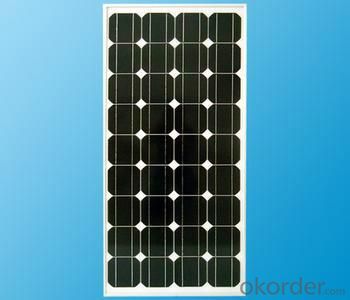
Specification
Model | PS-20M -18V |
Crystalline type | monocrystalline |
Maximum power (Wp) | 20 |
Maximum power voltage (V) | 17.2 |
Maximum power current (A) | 1.18 |
Open circuit voltage (V) | 21.4 |
Short circuit current (A) | 1.30 |
Number of cells (Pcs) | 36 |
Size of module (mm) | 475*350*25mm or as required |
Maximum system voltage (V) | 715 |
Temperature Range | -40~+85 C |
Surface Maximum Load Capacity | 60m/s(200kg/sq.m) |
Allowable Hail Load | steel ball fall down from 1m height |
Weight per piece (kg) | 1.8 |
Length of Cables (mm) | 300 |
Cell Efficiency (%) | >17.6% |
Module Efficiency (%) | >12% |
Output tolerance (%) | +/-5% |
Frame (Material, Corners, etc.) | Aluminum |
Standard Test Conditions | AM1.5 1000W/m2 25 |
FF (%) | 72% |
Warranty | 2 years product warranty and 25 years 80% of power |
FAQ
Can we visit your factory?
Surely, I will arrange the trip basing on your business schedule.
Can you do OEM for us?
Yes, we can.
How do you pack your products?
We have rich experience on how to pack the panels to make sure the safety on shipment when it arrives at the destination.
Can you help us install the module if we cooperate with you?
We haven’t entered into installation sector, but we have the plan in near future.
- Q: Hi, i want to please a solar panel in Lima Peru, my Latitude is -2 and longitude -77. I understand that since i am in the southern hemisphere, my panel should be pointing north. However, i am using a program called pvdesigner, and according to this, y should face my panel with and azimuth of 00degrees (0 = south) and a tilt of 60degrees. Does this make any sense?thanks
- Typically, solar panels are installed facing the same as your latitude = 2 degrees to the North measured from horizontal. 60 degrees from vertical = 30 degrees from horzontal will give almost as much power in June as in December = beginning of Summer. You can face your panels straight up = zero tilt from vertical = better for December/ not so good in June. Usually, the same tilt as your North facing roof is best as it simplifies installation and reduces wind loading. Shade from trees etc will much reduce the power you get. Neil
- Q: Are there any maintenance requirements for solar panels?
- Yes, solar panels do require some maintenance. Regular cleaning to remove dust and debris is recommended to maximize their efficiency. Additionally, inspecting the panels for any signs of damage or wear, and ensuring proper wiring and connections, are important maintenance tasks.
- Q: Can I fet free solar panels. This site okorder sells a book that tells how to, but I ordered tha book more then a year a go, and in never came. I even sent them a email a day for more then 3 months and never heard back from them. If anyone knows how to get free pannels, please let me know how. A $300.00 a month bill is slowly killing me.
- Try approaching a few power suppiers to find out if they have any scheme or grants available. Or contact a local DIY store/builders merchants and ask if you can have some panels installed and agree to advertising allowing them to let people contact you for your opinion on the panels.
- Q: I jotted down some notes for my Technology and Architecture class and I'm trying to figure out what i meant when i said 'Treated with gases at extremely high temperatures.' I have NO idea what I was talking about :) Im trying to figure out if what I am talking about is about Silicon, Polychristaline, or a Solar Cell/Panel.
- Let me help you get an idea of what you are talking about as your notes seems a bit jumbled. Mostly when they refer to a silicon solar cell they mean that the silicon is one crystal of silicon. (very much like a diamond, but with atoms of silicon instead of carbon). A single perfect crystal of silicon can be grown that is very large at temperatures near the melting point of silicon or around 400C and then is sawed up to create electronics or solor cells. Polycrystalline :) solar cells are also made of silicon, but instead of a single crystal it is made of a jumble of small crystals that have different sizes and directions. So these types of solar cells can be made using a silicon gas (siline: SiH4) at much lower temperatures 600-700C. So these are less expensive to make, but because they are not perfect crystals a poly solar panel that is the same size as a crystalline solar panel will make less energy. I hope that helps.
- Q: Can solar panels be used for powering a water treatment plant?
- Yes, solar panels can be used to power a water treatment plant. Solar energy can be converted into electricity to run the necessary equipment and processes involved in treating water, making it a sustainable and environmentally friendly option for powering such facilities.
- Q: I need to know how solar photovoltaic panels work. Anyone have a good explanation?
- Hey E Girl, photovoltiac panels are pretty simple. They start with a solid block of silicone, and shave thin layers off of them, called wafers. Once you have about 72 of them, you take half of them and dope them with boron, then the other half are doped with phosphorous. Once that's done, they take one each phosphorous and boron wafer, and glue them together with a special conductive epoxy glue, and attach a wire to each wafer. When the two glued wafers are exposed to the sun, a reaction occurs that forces free electrons from the silicone particles from one wafer onto the other, and a voltage is generated between them, about /2 volt to be exact. Once all 36 pairs are glued together, they are wired in series, connecting the phosphourous wafer from one to the boron wafer on the next, and so on. If you start with 72 wafers, you'll have 36 pairs glued together when you are done. At /2 volt each, that makes a 8 volt panel, which is used to charge a 2 volt battery. The charging source always has to have a few more volts than the battery. These 36 pairs of cells are then arranged on some kind of back board, glued down, covered with acrylic glass and mounted in a frame. There are some great websites you can go to for more info, I will list some below. Did you know that there are over 00,000 homes and businesses in the US alone that use some level of solar power to operate their electrical systems? That's good news. We actually live in one of those homes, it is powered by both the wind and sun and heated with solar and wood. I hope this answers your question, good luck, and take care, Rudydoo
- Q: could any tell me what type off panel is the best tube or flat and how much it should be. I live in N Ireland
- the okorder himin solar
- Q: hey so im doing this project for my technology class and i was wondering what different colours solar panels can be. also is it possible to have kentic power as a back up power if batteries dont work? thx in advance
- Ours are all silver - we have them on a canal boat and on our house roof for water heating. I've not seen them in any other colour, but that doesn't mean they don't exist.
- Q: Can solar panels work at night?
- No, solar panels cannot generate electricity at night as they rely on sunlight to produce power.
- Q: Can solar panels be used for powering electric gates?
- Yes, solar panels can be used to power electric gates. Solar panels convert sunlight into electricity, which can be used to operate various electrical devices, including electric gates. This renewable energy source is an environmentally-friendly and cost-effective solution for powering gates in remote or off-grid locations.
Send your message to us
Low Cost 20w18v Mono Solar Panel, High Quality, Hot Sales
- Loading Port:
- China main port
- Payment Terms:
- TT OR LC
- Min Order Qty:
- 500 watt
- Supply Capability:
- 100000 watt/month
OKorder Service Pledge
OKorder Financial Service
Similar products
Hot products
Hot Searches
Related keywords
